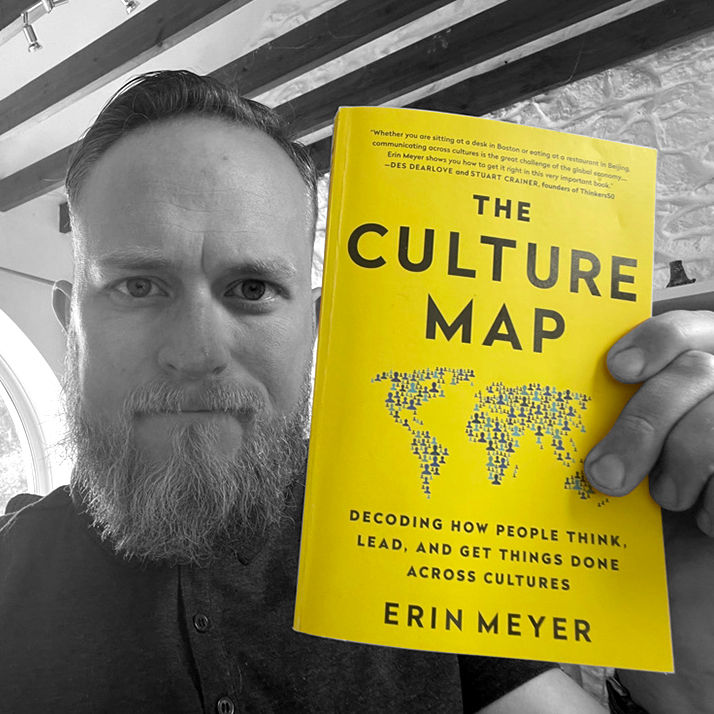Book review/recommendation: The Culture Map
- Matt Davies

- Jun 22, 2021
- 4 min read
For all of those business leaders out there looking to navigate global management dynamics I can do no better than to recommend the following book to you:
I’ve just finished reading it and I can’t recommend it highly enough. Why? Because it answered so many complex cultural issues I’ve been witnessing and will be certain to help me as I work internationally. It will be one of those books I’ll go back to again and again as I work with leadership teams spread out across the globe.
The basic theory of the book is that a national or regional culture shapes the way people think, what they believe and how they get things done. What is considered virtuous in one culture is considered rude and frustrating in another.
Key cultural issues & sliding scales
The book walks you through 8 key cultural issues which are crucial to doing business globally. Different cultures can view these 8 areas very differently and so you ignore them at your peril. The key cultural areas are:
Communicating (low content vs high content)
Evaluating (Direct negative feedback vs indirect negative feedback)
Persuading (Principles-first vs Application-first)
Leading (Egalitarian vs Hierarchical)
Deciding (Consential vs Top-down)
Trusting (task based vs relationship based)
Disagreeing (Confrontational vs avoiding confrontation)
Scheduling (Linear time vs flexible time)
Erin has a brilliant method of helping you define your “cultural norm” by plotting different cultures on a sliding scale. This then helps you understand how you see others, and how you will be seen by them, based on this. It’s like a map. A culture map. To help you navigate globally. It shows how cultures vary along each spectrum from one extreme to another.
Book content
The content of the book basically details each of these key cultural areas. Along the way anecdotal examples give richness to the theory and the sliding scales tool are introduced and explained.
The examples Erin brings to the table shed light on some amazing cultural differences. For example how people make decisions. Some cultures like to spend a long time discussing a potential way forward - but then when consensus is made everyone jumps on board with the final decision and it gets done swiftly because the group has all discussed it for a long time and know what needs to be done. Another approach (mainly found in America) is to make a decision and then iterate on that decision as new data comes around. Decisions are more fluid and teams adapt. The initial decision is made quickly but the execution can take a while as things change. Both routes get things done - but different cultures view the way the other makes decisions differently and without this being pointed out chaos ensues!
In another chapter, Erin shows that American’s tend to precede anything negative with three positive comments whilst the Dutch, Israelis, French and Germans are much more direct. In one culture this feedback is considered rude. In another, dishonest.
The book deals with cultural perceptions about hierarchy - for example Russian, Latin-Americans and Asians tend to be steeped in hierarchy - but on the flip side, Scandinavians and Australians tend to think the leaders are one of the team and are way more Egalitarian. Understanding how a culture ticks helps you understand how a team you might be expected to manage will perceive your management style.
Another example of interest is how different cultures view time. In cultures such as Africa or parts of the Middle East, where plans have to change suddenly due to unexpected events outside of the average person’s control, time is viewed flexibly. However, in the UK or Germany where things like traffic and law enforcement tend to be more reliable, set times are expected to be kept to.
I was particularly impressed with Erin’s ideas around how the different national cultures came about. She covers things that stretch way back into history - for example, the Pioneer spirit for 1700 America giving birth to the ideas of iterative decision making in the 21st Century and the hierarchical and centralized structure of the Roman Empire influencing Spanish and Italian business culture today.
Who will enjoy this book?
Anyone involved in international business will find value in this book. If you are the CEO of an international corporation, or a leader in a tech scale-up looking to go global or even a freelancer sitting in your home office doing business all over the globe - this book will help you to understand the different dynamics between cultures.
Of course, there is no one way of looking at these things. Cultural dynamics are complex. There are different personalities and people are individuals. Different companies also have their own cultures. However, national culture helps to shape individuals, and therefore having a sense of this is incredibly valuable. It is helpful to have some form of framework to help you - and this book gives you that.
All in all, The Culture Map will provide you with a way of decoding how cultural differences impact your international business and brands. You walk away for the book with a clever analytical framework and practical advice for succeeding globally.
All in all it’s a super read and book. Get your copy today »







